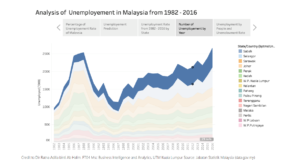- IJASCA (Scopus Indexed) FREE
IJASCA is a peer-reviewed journal, published three times a year that publishes articles which contribute in all areas of Advances in Soft Computing.
The aim of this journal is to provide a lively forum for the communication of original research papers and timely review articles on Advances in Soft Computing and Its Applications. IJASCA will publish only articles of the highest quality. Submissions will be evaluated on their originality and significance. IJASCA invites submissions in all areas of Soft Computing and Its Applications.
The scope of the journal includes, but is not limited to:
√ Soft Computing Fundamental and Optimization
√ Soft Computing for Big Data Era
√ GPU Computing for Machine Learning
√ Soft Computing Modeling for Perception and Spiritual Intelligence
√ Soft Computing and Agents Technology
√ Soft Computing in Computer Graphics
√ Soft Computing and Pattern Recognition
√ Soft Computing in Biomimetic Pattern Recognition
√ Data mining for Social Network Data
√ Spatial Data Mining & Information Retrieval
√ Intelligent Software Agent Systems and Architectures
√ Advanced Soft Computing and Multi-Objective Evolutionary Computation
√ Perception-Based Intelligent Decision Systems
√ Spiritual-Based Intelligent Systems
√ Soft Computing in Industry ApplicationsOther issues related to the Advances of Soft Computing in various applications.
2. The International Journal of Interactive Multimedia and Artificial Intelligence (IJIMAI) – ISI Indexed FREE
Topics covered by IJIMAI include but are not limited to:
Artificial Intelligence
- AI and Multimedia techniques for enhanced accesibility systems.
- AI in Games.
- AI for Software Engineering.
- AI for Ubiquitous Computing.
- AI for Web Intelligence Applications.
- AI Parallel Processing Tools (hardware/software).
- AI Tools for CAD and VLSI
- AI Tools for Computer Vision and Speech Understanding.
- AI Tools for Multimedia, Cognitive Informatics.
- AI components for Service Oriented Arquitectures (SOA).
- Neural Networks for AI.
- Fuzzy logic systems.
- Case base reasoning systems.
- Heuristic and AI Planning Strategies and Tools,
- Natural Language Understanding.
Soft Computing: Foundations, Methodologies and Management
- Computer Networks.
- Fuzzy Logic.
- Domain Theory and tyoe theory.
- Pattern Recognition.
- Robotics.
- Web Intelligence.
Data Mining and Knowledge Management
- Knowledge-Based/Expert Systems.
- Knowledge Management and Processing Tools.
- Knowledge Representation Languages.
- Data Mining and Machine Learning Tools.
Semantic Web, Web Services an Networks
- Semantic Web.
- Semantic Reasoners.
- Semantic web services.
- Upper ontologies.
Interactive Multimedia
- Visual Perception.
- Analysis/Design/Testing.
- Social networks.
- Human Computer Interactions
- User Experience
3. 4th Visual Informatics International Seminar 2018 – Selected papers to Scopus Journal RM700
“Digital Transformation Landscape in the Fourth Industrial Revolution (4IR)” to cater the current needs on visual informatics in various research areas and industries. 2nd July 2018
4. Journal of Fundamental and Applied Sciences (JFAS) – ISI Indexed Free
It covers a wide range of academic disciplines, mainly:
- Sciences of matter,
- Engineering sciences,
- Life sciences,
- Medicine, Dentistry, Pharmacy, and Health Sciences,











